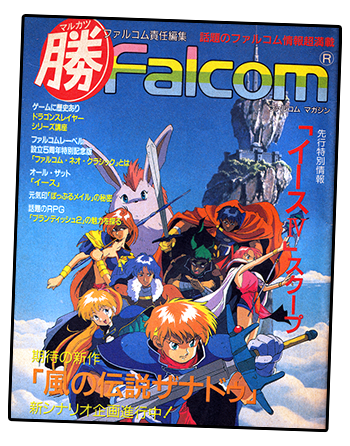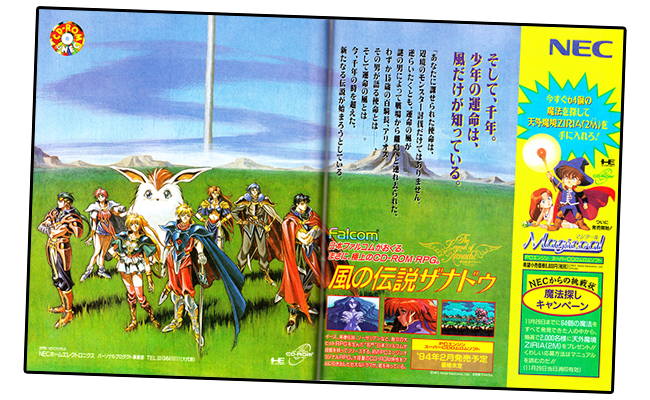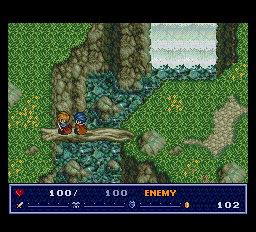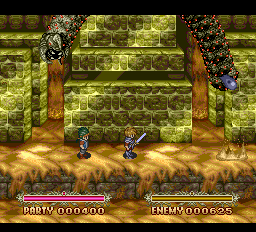The Legend of Xanadu
(An Introduction…)
In the late 1980s and early 1990s, Nihon Falcom made some of the best role-playing video games in the world. From quirky one-off adventures like Popful Mail to long-time-series cornerstones like Ys, the run of smash hits they produced in their prime was nothing less than phenomenal. The original Xanadu, released in 1985, still holds the record for most copies sold among all role-playing-games released on PC in Japan.
SOURCE: Marukatsu PC Engine (March 1993 Special Insert). PC Engine Fan (January 1994).
And there is the key thing to note: released on PC. Ever since they first started making games in 1982, Nihon Falcom was a PC-exclusive company. Only a small number of licensed adaptations, rebuilt from the ground up by third party companies and often wildly modified, ever made it to home consoles like Nintendo's NES. Nihon Falcom made PC games, and that was that; it was part of their identity, and they stubbornly held themselves to it.
Nonetheless, in 1989, a company called Hudson adapted the first two Ys games to their underdog home console, the TurboGrafx-16. This was the first console in history to have a CD-ROM drive, and it was Hudson's plan to use Ys to show off what the format could do. Ys and Ys II were great games to begin with, but the new animated scenes, voiced character dialogue, and high-fidelity music that Hudson was able to add complimented them so well that everyone, Falcom included, acknowledged that they were superior to the original versions.
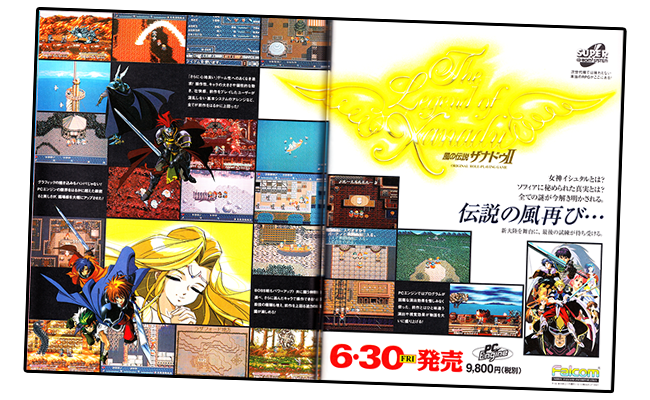
SOURCE: Gekkan PC Engine Magazine #01 (January 1994). PC Engine Fan (December 1993). PC Engine Fan (July 1995).
As Hudson ported more of Nihon Falcom's games to CD-ROM and got similar responses
from fans, cracks started forming in their PC-only policy. In
March of 1992, it finally gave way. After ten years and over thirty games
on PC, they made the momentous announcement that they were finally going to create a game
for a home console. The platform they chose, unsurprisingly, was the
TurboGrafx-16 CD, and the game they made was called The Legend of Xanadu.
It was the most ambitious thing they had ever attempted. Yoshio Kiya, the star programmer/director of many of Nihon Falcom's most important games, headed it as his last project at the company before striking out on his own. What he and the full staff produced after a solid two years of work is not just one of the best games to come out of Nihon Falcom, but also one of the most remarkable works in what many feel is the golden age of Japanese gaming.

The Legend of Xanadu on PC-Engine/TurboGrafx-16: Kaze No Densetsu Xanadu (02.18.1994). With the help of compelling cinemas, the writing and story-progression in particular are outstanding.
A year and a half later came The Legend of Xanadu II, and it would be easy
to mistake this sequel as part of a completely different series. Although
its story is a bit more conventional, the game's flow is also much more
brisk and polished, making it the more readily accessible of the two. Falcom aimed for a higher level of presentation as well,
and The Legend of Xanadu II is arguably the most technically
and artistically outstanding game on the TurboGrafx-16.
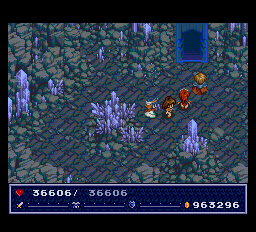
The Legend of Xanadu II on PC-Engine/TurboGrafx-16: Kaze No Densetsu Xanadu II (06.30.1995). The character design and attention to detail is evident throughout the entire game.
Sadly, neither of the two The Legend of Xanadu games have seen the light of day outside of Japan. By the time the first one came out, Hudson's TurboGrafx-16 had lost all market presence in the US. Probably owing to the departure of Yoshio Kiya, they've never been remade, either. With every year that passes by, they fade a little further into obscurity.
But that is going to change with our fan-translations. Not only that, but it's going to change soon, because we are basically finished. The writing, the programming, the graphics, the testing—it's all done for both of these games, and to a very high standard if we do say so ourselves. All they need now is English voices to replace the Japanese ones in the cinemas. The audio-mixing has even been laid out in advance, and is only waiting for takes recorded by capable actors to be dropped in.
Do you have a good voice? Can you act out a few lines in front of a microphone? Please send us an audition. This is your chance to be a part of two historically significant, fantastic games, and to help us give them the world-wide attention they deserve.


